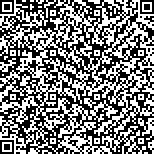| 摘要: |
| 根据细菌16S rDNA3'端和23S rDNA5'端的高度保守区设计引物,PCR扩增了5株溶藻弧菌、2株河流弧菌和2株创伤弧菌的16S—23S rDNA间区,克隆到pGEM-T载体上,测序;采用BLAST和DNAstar软件对16S—23S rDNA间区序列及其内的tRNA基因进行比较分析研究。结果表明,3种弧菌共测出的16S—23S rDNA间区有33条,类型有6种:IGSGLAV、IGSGLV、IGSIA、IGSG、IGSA和IGS0,其中IGSIA和IGSG最为常见,9株弧菌均包含有此两类IGS;在3种弧菌中,大部分IGS序列tRNA基因两端的非编码区具有较高的种内同源性,可以成为设计种特异性引物和探针的靶区。16S—23S rDNA间区结构的差异为建立一类新的弧菌检测方法奠定了基础。溶藻弧菌的16S—23S rDNA间区序列为首次报道。 |
| 关键词: 溶藻弧菌,河流弧菌,创伤弧菌,16S—23S rDNA间区, tRNA基因 |
| DOI: |
| 分类号: |
| 基金项目:国家“863”计划资助项目,2001AA622020号;广东省科技厅专项资助项目,2KB05301N号;湖南科技大学博士基金资助项目,E50437号 |
|
| CLONING, SEQUENCING AND ANALYSIS OF 16S—23S rDNA INTERGENIC PACERS (IGSs) OF 3 SPECIES OF VIBRIO, THE PATHOGENS IN AQUACULTURE |
|
DENG Xian-Yu1,2,3, WANG Zhi-Xue3, SUN Chen-Bo4, HE Jian-Guo3
|
|
1.School of Life Sciences, Hunan University of Science and Technology, Xiangtan, 411201;2.Institute of Oceanology, Chinese Academy of Sciences, Qingdao, 266071;3.School of Life Science, Zhongshan University, Guangzhou, 510275;4.School of Fisheries Science, Zhanjiang University of Oceanology, Zhanjiang, 524025
|
| Abstract: |
| Based on the bacterial conservative sequences flanking the 3’ end of the 16S and the 5’ end o f the 23S rDNAs, the authors designed primers and PCR-amplified the 16S–23S rDNA intergenic spacers (IGSs) of 5 strains of Vibrio alginolyticus, 2 strains of V. fluvialis and 2 strains o f V. vulnificus, all of which are pathogens in aquaculture, and cloned the purified PCR production with pGEM-T vector. Different clones were selected for sequencing. Characteristics of the sequences determined for the 16S–23S rDNA IGS of these 3 species were examined against GenBank using NCBI GenBank BLAST function. Then, the 16S–23S IGS sequences were also specially aligned for intra-species sequence homology analysis using DNAstar software. 33 IGS sequences were deposited in GenBank under accession numbers AY245198 to AY245230, and the 16S–23S rDNA IGSs of V. alginolyticus were reported for the first time in the world.
The results showed that 33 IGSs were sequenced and 6 types of polymorphic IGSs were recognized, namely, IGSGLAV, IGSG LV, IGSIA, IGSA, IGSG and IGS0. Among these 6 IGS types, IGSG LAV is the biggest one, including clusters of tRNAGlu-tRNALys-tRNAAla-tRNAVal; IGSGLV, consisting that of tRNAGlu-tRNALys-tRNAVal; IGSAG, tRNAAla-tRNAGlu; IGSIA, tRNAIle-tRNAAla; IGSG, tRNAGlu; IGSA, tRNAAla; and IGS0 is the smallest one having no tRNA gene. IGSIA and IGSG were the most frequent types, both were found in each of these 9 Vibrio strains. Intra-species multiple alignment of all the IGS sequences revealed several highly conserved sequence blocks in non-coding regions flanking the tRNA genes in all of the strains, the first 40 and last 200 nucleotides were most notably, which can be targeted to design species-specific PCR primers or detection probes. The structural variation of the spacers would help develop diagnostic methods for these pathogenic Vibrios. |
| Key words: Vibrio alginolyticus, V. fluvialis, V. vulnificus, 16S–23S rDNA IGS, tRNA gene |
